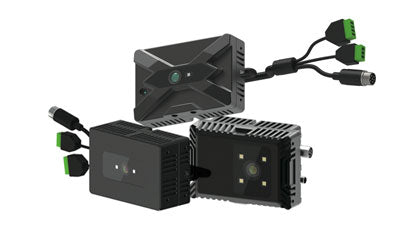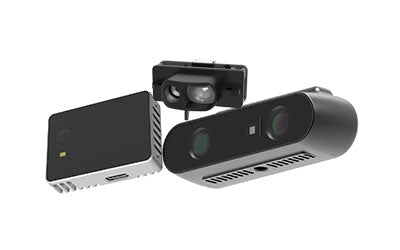Semiconductor Chips & TOF: Precision Ranging for Smart Technologies
Why Are Semiconductors Important?
Semiconductors are crucial in modern technology because they are the core foundation of electronic devices and systems. Here are some key reasons why semiconductors are important:
-
Controlling Current: Semiconductor materials can switch between conducting and insulating, allowing precise control of current in electronic devices. This property makes semiconductors widely used in products such as computers, smartphones, televisions, and household appliances.
-
Supporting Digital Technology: Modern digital technologies rely on semiconductor chips for high-speed computation and data processing. Semiconductor chips are the "brain" of all smart devices (such as smartphones, computers, autonomous vehicles), supporting operating systems, applications, and various functions.
-
Energy Efficiency and Miniaturization: Semiconductor technology enables smaller device sizes, lower power consumption, and higher efficiency. This is particularly important for portable devices (such as smartphones, wearable devices), allowing them to offer strong performance while maintaining long battery life.
-
Driving Technological Progress: Semiconductor technology is the foundation for many high-tech fields, including artificial intelligence (AI), autonomous driving, 5G communication, Internet of Things (IoT), and medical technology. Without semiconductors, many modern technological applications would not be possible.
-
Promoting Economic Growth: The semiconductor industry is vital to the global economy. It has driven the rapid development of the tech industry and is closely connected to various sectors, creating numerous jobs and innovation-driven industries.
Semiconductors not only form the basis of modern electronic devices but also play a critical role in driving technological innovation, enhancing productivity, and improving the quality of life.
How Semiconductor Chips Empower TOF Technology
In the rapid development of modern intelligent technology, 3D sensing technology has become the core driving force for applications in smart devices, autonomous driving, robots, augmented reality (AR), and virtual reality (VR). Among the many depth-sensing technologies, TOF (Time of Flight) has become a cornerstone of the intelligent world due to its high precision, low latency, and long-range sensing capabilities.
The success of TOF technology depends on the strong support of semiconductor chips, including light source chips, image sensors, signal processing chips, and AI acceleration chips, all working together to efficiently emit, receive, and process light signals and convert them into accurate 3D depth data.
So, how do semiconductor chips empower TOF technology? What innovative breakthroughs have resulted from their combination? This article will explore how semiconductor chips drive the development of TOF technology and empower future intelligent scenarios.
The Key Role of Semiconductor Chips in TOF Technology
Basic Principles of TOF Technology
TOF technology is a 3D sensing technology based on optical ranging. The basic principles are as follows:
- Light Source (VCSEL Laser or LED) emits a short pulse of light.
- The target object reflects the light, and the reflected light returns to the sensor.
- The TOF sensor receives the light signal and calculates the round-trip time (the "flight time").
- The calculation chip analyzes the time difference of the light signal and converts it into 3D depth data.
In this process, semiconductor chips play a crucial role in emitting light, receiving signals, and performing data calculations.
Key Components of Semiconductor Chips in TOF Systems
VCSEL (Vertical Cavity Surface Emitting Laser) Chips: Precise Light Source
VCSEL chips serve as the light source for TOF sensors, capable of emitting high-power, stable laser pulses to ensure measurement accuracy and long-range detection capabilities. Compared to traditional LED light sources, VCSEL offers better power consumption, stability, and precision, making it widely used in smartphones, autonomous driving, and LiDAR systems.
CMOS/CCD Image Sensor Chips: Converting Light Signals
CMOS or CCD image sensors are used to receive light signals and convert them into electronic signals, which are then processed by calculation chips to compute depth data. High-sensitivity back-illuminated CMOS (BSI CMOS) sensors perform better in low-light conditions, enabling TOF technology to operate stably in nighttime or dark environments.
SPAD (Single-Photon Avalanche Diode) Chips: Ultra-High Sensitivity Detection
SPAD chips can detect individual photons, making them especially suitable for high-precision ranging in low-light environments. Their microsecond-level response speed ensures accuracy in applications such as autonomous driving, security monitoring, and medical 3D imaging.
AI Computation Chips (NPU, ASIC, FPGA): Real-Time Data Processing
TOF sensors require extensive light signal calculations. High-performance AI chips (such as NPU, ASIC, FPGA) can process millions of depth data points in real time, ensuring smart devices can complete 3D modeling in milliseconds. This is crucial in applications like intelligent security, robot navigation, and 3D facial recognition.
Breakthroughs Brought by the Integration of Semiconductor Chips and TOF Technology
High-Precision Ranging: Significant Enhancement in 3D Sensing Ability
TOF sensors, relying on high-precision VCSEL laser emitters and SPAD photodetectors, can provide millimeter or even micron-level precision in depth measurements. This makes them suitable for 3D facial recognition, augmented reality (AR), and precision industrial measurement. In autonomous driving and drone mapping, TOF sensors combined with high-performance AI computation chips can quickly generate 3D environmental maps, enhancing perception capabilities and safety.
Super-Speed Data Processing: Millisecond Response Enhances Interaction Experience
Traditional TOF systems require extensive light signal processing and time calculations. The computational breakthroughs of semiconductor chips allow AI-accelerated chips (like NPU, DSP) to process 3D data in milliseconds, ensuring real-time responses in fields like autonomous driving, intelligent security, and robot navigation.
Low Power Design: Stronger Battery Life for Smart Devices
As semiconductor processes evolve from 10nm, 7nm to 5nm and 3nm, the power consumption of TOF sensor chips is significantly reduced, allowing them to run for longer periods. Advanced power management chips (PMIC) and low-power VCSEL lasers ensure that TOF technology provides better battery life for smartphones, wearable devices (AR glasses), drones, and robots.
Enhanced Environmental Adaptability: Suitable for Complex Scenarios
With the adoption of advanced semiconductor materials like silicon carbide (SiC) and gallium nitride (GaN), TOF sensors can operate normally under complex environments such as bright light, low light, smoke, and rainy weather, making them more stable in applications like autonomous driving at night, drone mapping, smart monitoring, and medical 3D scanning.
Future Development of TOF Technology Driven by Semiconductor Chips
Higher Precision and Longer Ranging
Future TOF sensors will integrate nano-scale optical components, achieving micron-level ranging precision and supporting longer distance measurements (>100m). This will advance industries such as industrial robots, autonomous driving, drone mapping, and satellite remote sensing.
Lower Power Consumption and More Compact Design
With the widespread adoption of 3nm and 2nm chip processes, the energy consumption of TOF technology will continue to decrease, and its integration will be higher, making it more suitable for wearable devices, smart homes, and consumer electronics.
Stronger AI Computational Capabilities
Future TOF sensors will be integrated with stronger AI computation chips and powered by deep learning algorithms, enabling intelligent 3D recognition, real-time scene modeling, and automatic target classification, providing more precise data support for autonomous driving, intelligent security, and AR/VR.
The Deep Integration of Semiconductor Chips and TOF Technology Drives a Revolution in 3D Sensing Technology
Semiconductor chips are the core of TOF technology, determining ranging accuracy, data processing speed, and power consumption.
Advanced semiconductor processes (such as 3nm fabrication and AI acceleration chips) are driving the intelligent development of TOF applications.
The combination of TOF + AI + low-power semiconductor chips will create greater value in autonomous driving, intelligent security, smart homes, and industrial automation.
As semiconductor technology continues to progress, TOF sensors will become an indispensable core component in the smart world, driving the development of precise sensing, intelligent interaction, and automated control, leading 3D sensing technology to new heights.
Synexens 3D Of RGBD ToF Depth Sensor_CS30
Our professional technical team specializing in 3D camera ranging is ready to assist you at any time. Whether you encounter any issues with your TOF camera after purchase or need clarification on TOF technology, feel free to contact us anytime. We are committed to providing high-quality technical after-sales service and user experience, ensuring your peace of mind in both shopping and using our products.



